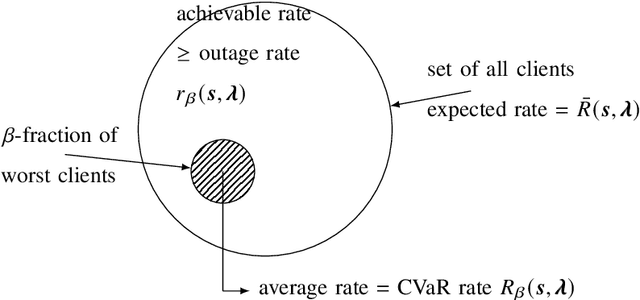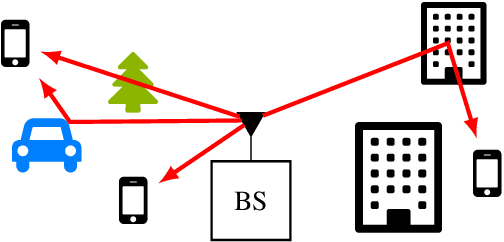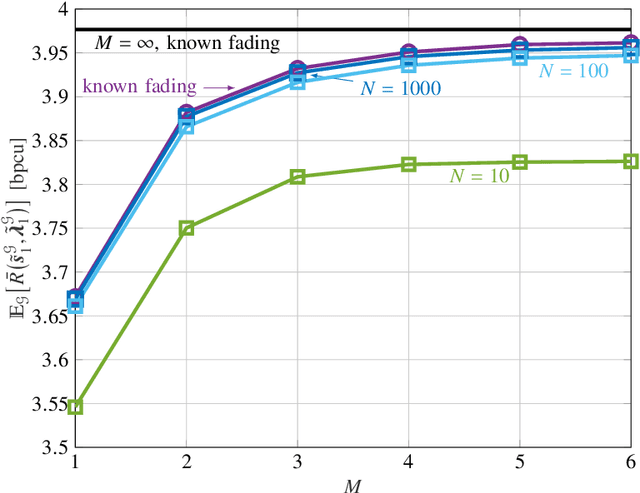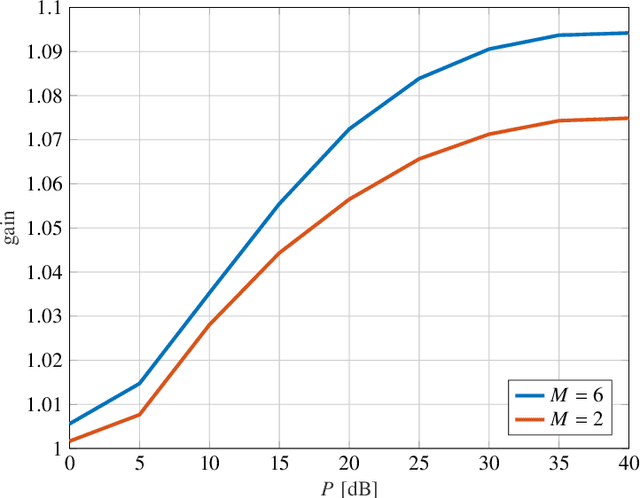Roy Karasik
Shitz
Learning to Broadcast for Ultra-Reliable Communication with Differential Quality of Service via the Conditional Value at Risk
Dec 03, 2021



Abstract:Broadcast/multicast communication systems are typically designed to optimize the outage rate criterion, which neglects the performance of the fraction of clients with the worst channel conditions. Targeting ultra-reliable communication scenarios, this paper takes a complementary approach by introducing the conditional value-at-risk (CVaR) rate as the expected rate of a worst-case fraction of clients. To support differential quality-of-service (QoS) levels in this class of clients, layered division multiplexing (LDM) is applied, which enables decoding at different rates. Focusing on a practical scenario in which the transmitter does not know the fading distribution, layer allocation is optimized based on a dataset sampled during deployment. The optimality gap caused by the availability of limited data is bounded via a generalization analysis, and the sample complexity is shown to increase as the designated fraction of worst-case clients decreases. Considering this theoretical result, meta-learning is introduced as a means to reduce sample complexity by leveraging data from previous deployments. Numerical experiments demonstrate that LDM improves spectral efficiency even for small datasets; that, for sufficiently large datasets, the proposed mirror-descent-based layer optimization scheme achieves a CVaR rate close to that achieved when the transmitter knows the fading distribution; and that meta-learning can significantly reduce data requirements.
Single-RF Multi-User Communication Through Reconfigurable Intelligent Surfaces: An Information-Theoretic Analysis
Jan 19, 2021


Abstract:Reconfigurable intelligent surfaces (RISs) are typically used in multi-user systems to mitigate interference among active transmitters. In contrast, this paper studies a setting with a conventional active encoder as well as a passive encoder that modulates the reflection pattern of the RIS. The RIS hence serves the dual purpose of improving the rate of the active encoder and of enabling communication from the second encoder. The capacity region is characterized, and information-theoretic insights regarding the trade-offs between the rates of the two encoders are derived by focusing on the high- and low-power regimes.
 Add to Chrome
Add to Chrome Add to Firefox
Add to Firefox Add to Edge
Add to Edge